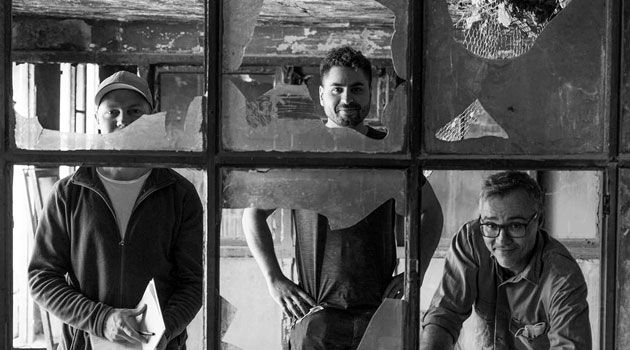Palaeontologists undertake rescue expedition to Tunisia
Palaeontologists Mohamad Bazzi and Benjamin Kear have recently returned from an expedition to Gafsa in southern Tunisia. Having arrived to collect fossils, once there they found themselves involved in the rescue of unique collections from a museum burned down during the Tunisian Revolution.
It began as a normal field expedition to collect fossils from the post-dinosaur period.
“Our area of interest is the first 10 million years after the age of the dinosaurs – a period of mass extinction and climate change. Above all, we study shark fossils. The collections include a 54 million-year-old shark tooth,” says Benjamin Kear, docent and curator of vertebrate palaeontology at the Museum of Evolution in Uppsala.
Read more about the research project
In addition to shark fossils, they found fossils of fish, crocodiles and sea turtles. Most remain in Gafsa and will be studied there; however, they have brought some with them to the Museum of Evolution in Uppsala.
While in Gafsa they spoke to a number of local residents who showed them a museum that had been completely destroyed during the Tunisian Revolution in the aftermath of the Arab Spring.
Burned to the ground
The researchers were ushered into what remained of the building.
“It was a war scene, the building itself remained standing but parts had been burned to the ground. We managed to save some invaluable material and were invited to visit the mayor. It is a poor town with limited resources so we were tasked with the rescue mission,” says Mohamad Bazzi, who is a doctoral student at the Department of Organismal Biology.
Wearing masks, they worked to gather all of the material, attempting to catalogue it on site. Although all of the material has now been gathered, it may take some time before the work is complete. Their hope is to be able to build a research facility on site, where they can continue working with the fossils without the need to remove them from the country.
“We received a really great response from the local community. Of course, we are driven by research but, if we can help them to build up their cultural heritage, we will be doing something more. We hope to return before Christmas to continue work on the project,” says Benjamin Kear.
Interesting geographical area
This geographical area is of particular interest to researchers as it has experienced a long period of political instability, meaning that no major excavations have been conducted since the start of the twentieth century.
"As a palaeontologist, the Middle East is like a ‘black box’. The majority of research is based on excavations in Western Europe and the United States but there is so much more to discover in other geographical locations,” explains Mohamad Bazzi.
The period they are studying has similarities to our present-day situation. It was a time of climate change and research is focused on how organisms, in this case sharks, responded to the changing climate.
Commercial market for fossils
In parallel with their own research, the researchers are now collaborating with local authorities to rebuild the museum. The Tunisian collections are owned by a phosphate company, which is also participating in the rebuilding work.
“This is a regional museum project designed to maintain and display Tunisian natural history; however, it will soon be expanded into a formal educational collaboration with Gafsa University,” says Benjamin Kear.
It is hoped that the project will disseminate knowledge regarding just how valuable the fossils are to research.
“There is a commercial market for fossils in North Africa, including sales to tourists; so, we need to teach the local population more about the scientific value of fossils and how they can be stored sustainably for the future. Our main objective is to save the collections for use in research.”
Annica Hulth

